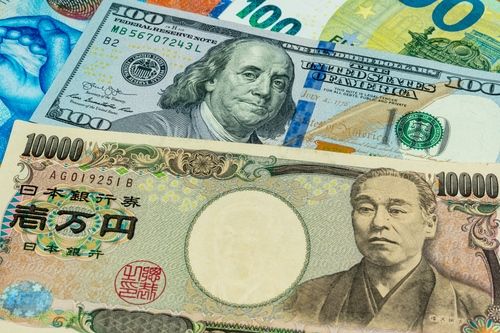
The Japanese Yen drifts lower at the start of a new week amid the BoJ rate hike ambiguity.
Sustained USD buying interest turns out to be another factor lending support to USD/JPY.
The divergent BoJ-Fed policy outlook could limit deeper losses for the lower-yielding JPY.
The Japanese Yen (JPY) kicks off the new week on a weaker note and seems vulnerable to prolong its retracement slide from the highest level since July 7, touched against a broadly firmer US Dollar (USD) last Wednesday. The initial market reaction to the Bank of Japan's (BoJ) hawkish on-hold decision on Friday turned out to be short-lived amid the uncertainty over the likely timing and the pace of rate hikes. This, along with a generally positive tone around the equity markets, undermines the safe-haven JPY.
Meanwhile, expectations that the BoJ will stick to its policy normalization path mark a significant divergence in comparison to the Federal Reserve's (Fed) dovish signal that two more rate cuts would follow through the end of this year. This, in turn, could act as a headwind for the USD and offer some support to the lower-yielding JPY. This, in turn, makes it prudent to wait for some follow-through buying before placing fresh bullish bets around the USD/JPY pair and positioning for any further appreciation.
The Japanese Yen struggles to lure buyers despite the BoJ’s hawkish rate decision last Friday
The Bank of Japan left its Target Rate unchanged at 0.50%, as was expected, for its fifth straight meeting on Friday, though there were two dissenters voting for a rate hike. Investors, however, remain concerned that the BoJ could delay raising interest rates amid domestic political uncertainty and economic headwinds stemming from US tariffs.
Japan's Chief Cabinet Secretary and Prime Minister contender, Yoshimasa Hayashi, said this Monday that the BoJ is conducting monetary policy in a way that does not deviate much from the government's thinking. If chosen as premier, will compile economic package to cushion blow from rising living costs, spending for disaster relief, Hayashi added.
The People’s Bank of China (PBOC) kept its benchmark lending rates unchanged for the fourth straight month in September, in line with expectations. The one-year and five-year Loan Prime Rates (LPRs) stood at 3.00% and 3.50%, respectively. This reflects a cautious approach to monetary easing amid easing US-China trade tensions, despite signs of a slowdown.
Meanwhile, the Federal Reserve last week lowered its benchmark rate for the first time since December and saw the need for two more rate cuts this year amid worries about a softening US labor market. This marks a significant divergence in comparison to the BoJ's relative hawkish stance and could help limit deeper losses for the lower-yielding Japanese Yen.
The US Dollar is seen building on last week's goodish rebound from its lowest level since July 2022 amid a hawkish assessment of Fed Chair Jerome Powell's remarks. Powell said that the Fed's rate reduction move was a risk management cut and that he doesn't feel the need to move quickly on interest rates. This remains supportive of the USD/JPY pair's move up.
There isn't any relevant market-moving economic data due for release on Monday, either from Japan or the US. Hence, traders will closely scrutinize comments from a slew of influential FOMC members, including Powell. This, in turn, will drive the USD demand later during the North American session and provide some meaningful impetus to the currency pair.
USD/JPY might face stiff resistance at the 200-day SMA near 148.60
-1758507448147-1758507448148.png)
From a technical perspective, acceptance above the 148.00 round figure factors the USD/JPY bulls. Moreover, oscillators on the daily chart have just started gaining positive traction and back the case for further appreciation. That said, any subsequent move up is more likely to confront stiff resistance near the 200-day Simple Moving Average (SMA), currently pegged near the 148.60 region. A sustained strength beyond will reaffirm the positive bias and allow spot prices to climb further beyond the 149.00 round figure, towards testing the monthly swing high, around the 149.20 zone.
On the flip side, the 147.70-147.65 region could offer immediate support, below which the USD/JPY pair could accelerate the slide towards the 147.00 mark. A convincing break below the latter would expose the 146.20 horizontal support before spot prices extend the downward trajectory towards the 145.50-145.45 region, or the lowest level since July 7, touched last Wednesday.
* The content presented above, whether from a third party or not, is considered as general advice only. This article should not be construed as containing investment advice, investment recommendations, an offer of or solicitation for any transactions in financial instruments.


